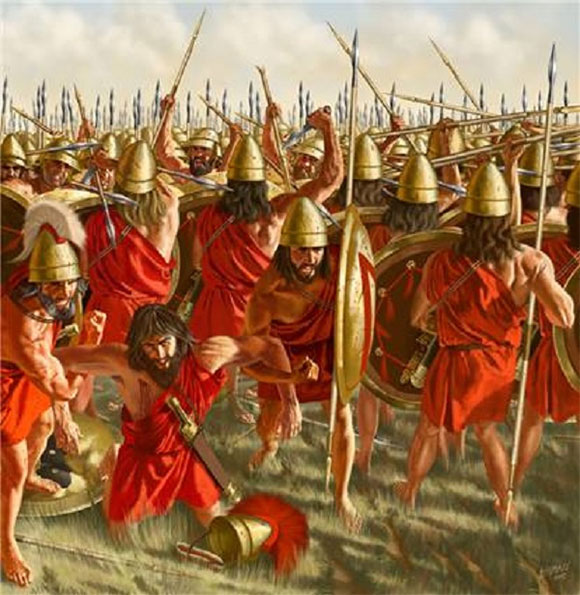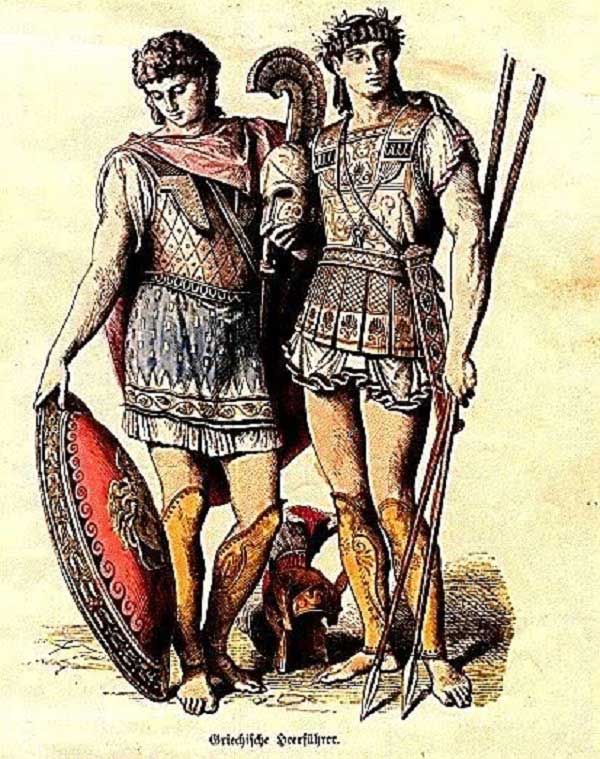The Theban Army’s Victory: A Tale of Love and Valor
In the 4th century BC, ancient Greece was a collection of various city-states, each with its own army, often embroiled in wars for territorial dominance. Among these, the Spartan Army was the most formidable. With their bloodthirsty and battle-hardened nature, they systematically conquered neighboring lands, leaving only one final obstacle to Greek unification: the city of Thebes. However, at the Battle of Leuctra, the powerful Spartan forces were defeated by 150 pairs of Theban warriors.
Before the Battle of Leuctra, Sparta was known as the most feared city-state of ancient Greece. Surrounded by mountains and lacking resources, the Spartans had no choice but to raid neighboring territories for land to cultivate.
As a result, Sparta fostered animosity across a vast region. Aware that a brutal and existential revenge campaign would inevitably occur, Spartan citizens developed a society with a strong militaristic inclination.

Sparta built what was considered the strongest army in the world at that time.
The Spartan people trained to be stronger, tougher, and more aggressive than their neighbors. This was the only way for them to survive and thrive.
In times of war, both men and women were ready to fight. At the age of seven, Spartan boys were taken from their families to attend military schools, where they lived and fought under strict discipline. They slept on hard beds covered with reeds, received only one set of clothing for the entire year, and were not allowed to study or practice any form of art.
Although girls did not live in barracks, they still had to engage in physical training at home. Any child born with deformities or deemed too weak would be left to die of exposure.
The legendary Spartan lawmaker Lycurgus prohibited any form of currency exchange, believing that money caused division and selfishness, weakening the discipline of the warriors.
Ultimately, Sparta succeeded in building what was considered the strongest army in the world at that time. They won battles continuously, with glory following glory. The elite Spartan warriors instilled fear in their enemies, whether they survived or perished.
A Humiliating Defeat…
However, this invincible army faced a bitter defeat in the campaign for Greek unification, with Thebes standing as the final barrier to Spartan dominance. Even more painfully, this loss was attributed to Thebes having 300 male homosexual warriors.
The armies of Sparta and Thebes chose the Leuctra fields as their battleground. Sparta deployed 10,000 infantry and 1,000 cavalry, while Thebes had only 6,000 infantry and 1,000 cavalry. Notably, Spartan King Cleombrotus I personally led the charge, further boosting the morale of the Spartan forces.
Cleombrotus positioned his cavalry at the front, with infantry forming a rectangular formation behind. All infantry were equipped with dory—long spears measuring 2 to 4 meters. The Spartan king intended to “devour” Thebes in this opening battle.
Noticing the extreme weakness of the Theban right flank, which had only 300 warriors for defense, King Cleombrotus unleashed a wave of heavy infantry to break through this fragile line. Strangely, the place that seemed weak with just 300 troops showed incredible courage and resilience.
They held their formation firmly and decimated a significant number of elite Spartan soldiers. Meanwhile, on the opposite flank, the denser Theban forces dealt powerful blows to Spartan main forces.
Alongside the 300 valiant warriors on the right, the Theban army killed over 1,000 Spartan soldiers, including King Cleombrotus. The Spartan forces fled in humiliation. From that point onward, this militaristic empire rapidly declined.
Unraveling Thebes’ Secret Weapon
The defeat of the “invincible” Spartan army at the hands of Thebes disrupted all of King Cleombrotus I’s plans for world conquest. The question that arose was what strength allowed a numerically inferior army, deemed less skilled in combat, to achieve victory.

With 300 valiant warriors on the right, the Theban army killed over 1,000 Spartan soldiers.
The Theban Sacred Band achieved a significant victory under the command of General Pelopidas. Although consisting of only 300 warriors, they defended the right flank against thousands of elite Spartan troops, fighting with extraordinary valor.
According to many historical records, all 300 of these warriors shared a common trait—they were all homosexual. They were selected from young, strong men within the community.
In addition to their exceptional hand-to-hand combat skills, they were also trained in horseback riding and dancing. Beyond their endurance and resilience in training, the bond among these warriors was “special,” with a vow to die for one another. In battle, the warriors always strived to perform their best in front of their “loved ones,” viewing the act of killing enemies as a “reward” for their “other half.”

An ancient philosopher wrote that homosexuality in the military was encouraged.
Historical documents confirm that the legend of the army consisting of 150 pairs of male homosexuals is indeed grounded in reality. In ancient times, the Greeks had a relatively open view of homosexuality. Male homosexual relationships were not merely preferences but were seen as a societal institution. Plato, an ancient philosopher, wrote that homosexuality in the military was encouraged because “love transforms the most cowardly into a capable hero,” and it was love that fueled their fighting spirit. The army of 150 pairs of male homosexuals in Greek history stands as a testament to this.


















































